10 Best DAW Software – Setting Up Your Virtual Studio
We may also earn commissions on purchases from other retail websites.
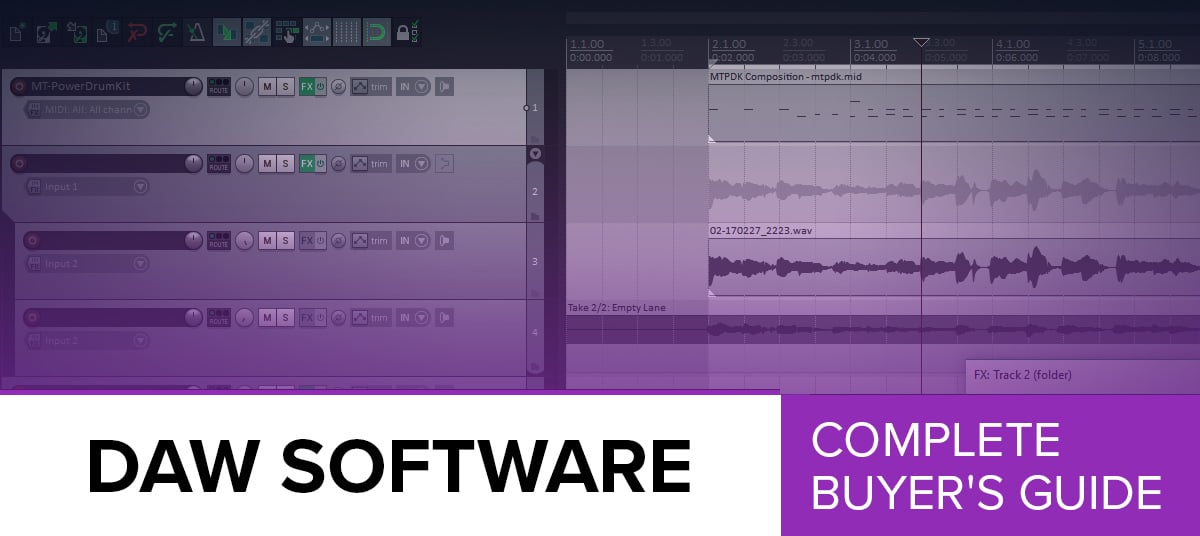
Last Updated: October-25-2018
In this new update, we removed two of the more dated programs – Cakewalk Sonar X3 and Ableton Live 9 – and replaced them with newer DAWs. These included the freshly updated Ableton Live 10 Standard and the fun Sonoma Wire Works RiffWorks Standard, as well as Propellerhead Reason 10 and the anniversary special, Image Line FL Studio 20 Producer Edition.
Digital Audio Workstation (DAW) software has completely changed the way we record, mix, master and ultimately produce music today. Back in the day, recording and editing a track required a lot of bulky equipment, instruments and various other accessories. In 2018, you can achieve the same results with nothing more than a laptop and a piece of rather sophisticated software.
In this article we have compiled a top 10 list of best DAW software on the market today. There are seven professional paid-for options, as well as three completely free DAWs that you can download right now. Let’s get started!Top 10 Digital Audio Workstations:
| Image | Studio Headphones / Rating | Summary | Check Price |
|---|---|---|---|
+ -  | Logic Pro X Total of 4.80/5 | Very clean and formidable DAW with plenty of awesome plug-ins to offer. | |
+ -  | Steinberg Cubase Pro 9 Total of 4.85/5 | Newest version of a industry wide legend that brings new awesome features. | |
+ -  | Propellerhead Reason 10 Total of 4.80/5 | All the powerful tools of Reason, now with third party VST support. | |
+ - 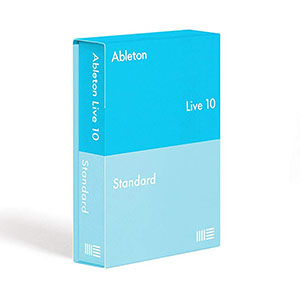 | Ableton Live 10 Total of 4.72/5 | This new version of a classic is a solid DAW for professionals. | |
+ -  | Image Line FL Studio 12 Producer Edition Total of 4.70/5 | The good old performer which brings more flexibility to its users. | |
+ - 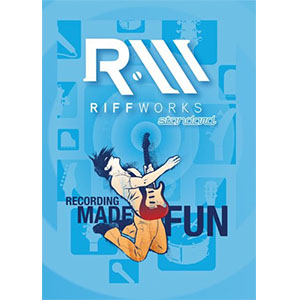 | Sonoma Wire Works RiffWorks Standard Total of 4.65/5 | An interesting DAW for guitarists that puts the fun into making music. | |
+ -  | PreSonus Studio One 3 Artist Total of 4.67/5 | A powerful DAW offering plenty of tools, samples and well optimized features. | |
+ -  | Audacity Total of 4.55/5 | A minimalist DAW that hides an impressive amount of power and performance . | |
+ -  | GarageBand Total of 4.53/5 | A light but capable DAW that makes recording and arranging music easy. | |
+ -  | Pyramix 11 Total of 4.58/5 | Incredibly elaborate free DAW which brings unique features and plenty of potential. |
Logic Pro X
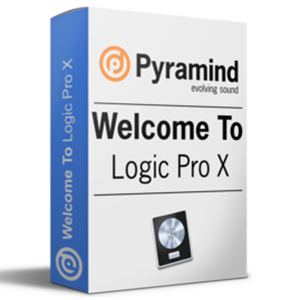
| Design: |  |
| Features: |  |
| Performance: |  |
| Value: |  |
Apple's Logic Pro X has been the go to choice for all Apple based producers. This DAW brings the best traits of Apples ideology, which translates to impressive design and uncompromising functionality.
User interface is very clean and easy to navigate. Everything feels like its right under your fingertips, making an average work flow silky smooth. That is a very important detail when it comes to getting projects done with no hiccups.
The core benefit of this DAW are its incredible plug ins. You are looking at a very wide range of options, each extremely detailed and versatile. Instruments sound very authentic and even some automated plug ins are proving to be rather functional. In short, a standard Apple package.
Steinberg Cubase Pro 9
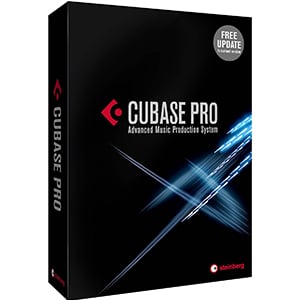
| Design: |  |
| Features: |  |
| Performance: |  |
| Value: |  |
Steinberg's Cubase series have been the staple of music production for decades. This DAW is easily one of the most powerful tools you can get. Pro version, as usual, brings the most comprehensive suite of both plug ins, features and tools.
Steinberg Cubase Pro 9 represents the newest addition to the already solid family. They have essentially ironed out a number of quirks that troubled previous versions and added few new features. In general, they did the same thing they always do.
Take the core package, fix a few things and push it to a new level. That approach has worked before and it certainly is working now. Cubase Pro 9 is a very solid piece of music production software.
Propellerhead Reason 10
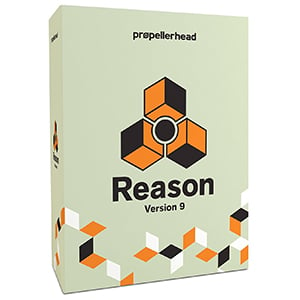
| Design: |  |
| Features: |  |
| Performance: |  |
| Value: |  |
For a long time, Propellerhead Reason was on the fringes of DAW industry. This is mainly due to them choosing to do things in a very unique way. Propellerhead Reason 910 brings what is probably the most important change in the development tree of this DAW.
Until now, you were limited to VSTs provided with Reason. That has changed. Propellerhead has pulled the trigger on third party VSTs, allowing us to import numerous thousands of awesome instruments, effects and other plug ins.
The combination of Reason's core performance, tools and features was always great. However, with this new expansion, it goes from great to epic. Reason has finally reached its apex form and it's everything we have always wanted.
Ableton Live 10

| Design: |  |
| Features: |  |
| Performance: |  |
| Value: |  |
One of the most popular and feature-heavy DAWs on this list comes from Ableton – the much-anticipated Live 10 Standard.
With a newly-designed clean and colorful UI, the whole package seems fresher than the previous iteration, not to mention more powerful and intuitive. As we highlight in the complete review of Ableton Live 10 Standard, there are some excellent new features.
These include the new Wavetable – a powerful and flexible synthesizer – as well as a plethora of functions that help make organizing your UI and tracks much easier. It’s not cheap, but it feels worth every penny!
Image Line FL Studio 12 Producer Edition
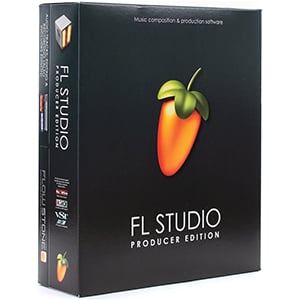
| Design: |  |
| Features: |  |
| Performance: |  |
| Value: |  |
If there is one DAW out there which can be described as a gateway drug into music production, it's FL Studio. The version we are looking at today, FL Studio 12 Producer, may not be as revolutionary as some of its predecessors, but it brings improvements in areas which have seen the most demand.
The core performance is more or less the same, aside from minor improvements. However, Image Line has completely redesigned the user interface to a point where it scales with your monitor's resolution.
In practical terms, this allows you to control your work space and decide how much on-screen real estate you want to work with. Overall, it is a rock solid DAW with plenty to offer.
Sonoma Wire Works RiffWorks Standard

| Design: |  |
| Features: |  |
| Performance: |  |
| Value: |  |
Aimed primarily at guitarists wanting to experiment with new riffs, RiffWorks Standard is certainly capable of producing full tracks – however this budget option from Sonoma Wire Works puts the focus on making music over production.
For a budget offering, the overall design of the UI is excellent and feels like you are working on a high-end amp as opposed to affordable software. It is also loaded with several effects and drum loops to help get the creative juices flowing.
There’s more to learn about this DAW, so be sure to check out the complete review of RiffWorks Standard for all the details.
PreSonus Studio One 3 Artist
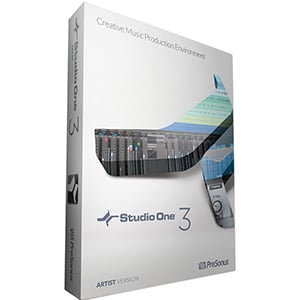
| Design: |  |
| Features: |  |
| Performance: |  |
| Value: |  |
PreSonus Studio One 3 Artist is one of those DAWs that does just about everything, and does it good. Despite it being the entry level version, PreSonus has loaded it up with enough tools and other goodies.
If there's one benefit of this DAW that we can point out, it is organization. Everything is so put together so well, making the entire package very efficient. Those who are used to a fast paced work flow will definitely enjoy the customization options, as well as the super fast browser feature.
Overall, PreSonus Studio One 3 Artist comes across as capable tool that can keep up with you, no matter how complex your projects tend to be. It delivers when pushed hard.
Audacity
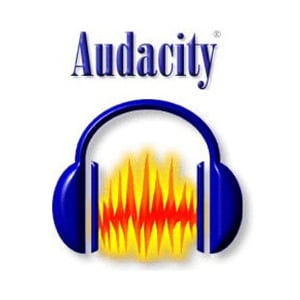
| Design: |  |
| Features: |  |
| Performance: |  |
| Value: |  |
The world of DAWs includes some awesome free versions. In that niche category, Audacity comes across as one of the most powerful and potent DAWs you can find. Once you fire it up, you will notice just how simple and minimalist everything looks.
The team behind Audacity spent very little time and resources on making this thing look good. All of their effort went into performance. Audacity is great for recording as well as editing.
It can get a surprising amount of work done right out of the box, while it also features VST compatibility and more. In general terms, it is a very flexible and versatile platform that can give some paid DAWs a good run for their money.
GarageBand
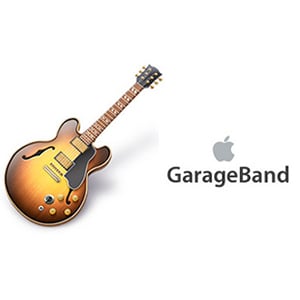
| Design: |  |
| Features: |  |
| Performance: |  |
| Value: |  |
Apple's GarageBand is a free piece of software that is accessible to every Apple user. It is a light DAW that packs a decent punch. Those who want to get into recording music or audio editing can do that rather painlessly with this software.
GarageBand features a pretty wide array of different plug ins and virtual instruments whose quality is surprisingly good. With its clean user interface, you can expect to get your tracks out the door fast.
Combined with a decent audio interface, recording guitars, vocals or other instruments is more than doable. GarageBand can be the core of your home studio if you're on a tight budget. It's a good way to prepare yourself for Logic Pro X.
Pyramix 11
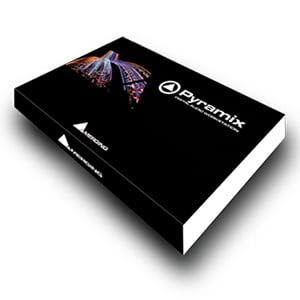
| Design: |  |
| Features: |  |
| Performance: |  |
| Value: |  |
Pyramix 11 by Merger is a professional grade DAW that you can grab for free. The moment you start it up, you'll know that it's not just another gimmicky DAW, but rather a proper music production tool. Pyramix comes with some unique features, such as 3D modeling for speaker output.
This allows you to optimize your tracks for various surround systems, including ones with more than a dozen of satellites. Overall, the amount of control you get over your mix is so impressive that it can be overwhelming for most.
That brings us to our next point. Pyramix requires a lot of learning. It's a complex piece of software which can give even most pros a run for their money.
What is a DAW?
Short for Digital Audio Workstation, a DAW is software designed to allow the user to record, mix, master and otherwise alter recorded sound. Whereas guitarists have guitars and drummers have drums, audio engineers have DAW software – think of it as a producer’s instrument!
Since the invention of the microchip, people saw the potential of emerging computer technology. As far back as the mid ’70s people were trying to create digital audio workstations, although back then the hardware was simply not up to the task. Fast forward to 2018 and DAWs are incredibly sophisticated and essential for modern audio production.
The most basic DAWs are mainly geared towards recording, while more advanced software offers a much wider range of possibilities. Not only do they replace just about every piece of studio equipment, but they make music production much easier. As a matter of fact, DAWs have almost completely replaced their hardware counterparts in this business.
Music production, recording and mixing is just one aspect of what you can do with one of these programs. You will find many professionals using DAWs to restore various audio files, or to enhance the quality of damaged recordings. The possibilities are very broad indeed.
Are There Different Types of Digital Audio Workstations?
There certainly are! The thing about Digital Audio Workstations is that each one is unique. Every brand out there is trying to give their users something new, or to find an easier way to get a common task done. In that context, every DAW offers something completely different.
However, DAWs can be classified into several categories based on what they were optimized to do. There are those optimized for recording music, those geared towards mixing and editing, and finally DAWs that were built for live performance applications. This is quite a simple classification, but it gives you a good picture of what you will run into on the market.
As you will soon find out, switching to a new platform is not easy once you are used to a specific type of DAW. Despite each platform sharing several elements, the controls for each are different, as is the approach each brand takes to solving specific issues. On top of that, this type of software isn’t cheap, so you will probably want to find one you like then stick to it.
Who Can Use Music Production Software?
Despite what many might think, learning how to use a DAW is something everyone can do given enough interest. Don’t let anyone tell you that it is not worth getting into music production unless you have a college degree. That is pure nonsense – just ask some of the masters of their trade, who work in some of the best studios in the world and have no formal qualification in audio engineering or music!
Of course, it still takes a lot of effort and there is a certain learning curve when it comes to this type of software. You will first have to master the interface of your chosen version, and then begin to grasp the basic concepts behind mixing, recording and mastering music (unless you already know them). Reaching a level of proficiency in DAW is difficult, but it is far from impossible.
Things You Will Need in Order to Use a DAW
Regardless of how expensive or acclaimed the DAW software, it is no good without some accompanying hardware! Naturally, the main piece of hardware you will need is a decent computer.
As obvious as that may seem, not all computers are equal in the world of DAWs. There are specific hardware requirements that must be met if you want a smooth performance and to be able to work unhindered. Here are some of them.
CPU
As you may expect, a CPU (Central Processing Unit) is the most important piece of hardware for music production. In general, DAWs are very resource hungry and they tend to hog a lot of your CPU power, even when you are running simple projects. The more effects, plug-ins and layers you add to your project, the more CPU power will be required. The good news is that most modern CPUs are powerful enough to sustain the stress of frequent music production.
In most scenarios, your average quad-core processor will be enough. Depending on which DAW you go for, a quad-core might even be the upper limit of what you need. Considering that a quad-core is the most common commercial CPU format, most companies will make their DAWs with these CPUs in mind.
RAM
RAM (Random Access Memory) is just as – if not more – important as CPU power. With regards to DAW software, the RAM acts as a temporary storage facility, where you store data that you are going to need fast access to. The moment you open your DAW, it is going to hog a decent chunk of your RAM, without even opening a single plug-in or loading a single preset. The more operations you start, the more RAM is going to be tied up.
Plug-ins, effects and other elements commonly found in DAW software are constantly evolving. In order to reach new levels of performance, software engineers are willing to trade some of that resource economy. Modern plug-ins are extremely RAM heavy and so are DAWs in general. Having more RAM is always a good thing. Speaking generally, anything less than 8GB of RAM is going to lead to performance issues, so go higher if possible.
Input Devices
Recording music directly into your computer requires a bit more than just said computer. You can’t simply plug your guitar directly into your microphone port and expect it to work. The same applies to other instruments. Instead, you will need an audio interface of some kind.
Most audio interfaces use USB connection to pair with your computer. These tiny devices are used to boost the signal coming from your instrument and format it into a package that can be read by your DAW. If you plan on actually recording music, an audio interface is a must. You can learn more about these devices in our dedicated guide to audio interfaces.
Another useful feature of a USB audio interface is the fact that it offers phantom power. In other words, you can use it to plug your condenser microphones into the system as well. Given that you have a somewhat adequate recording booth, you can actually get pretty good vocals using nothing else but a mic fed into the audio interface and your computer.
How to Choose a DAW?
So now we know what a DAW is, who can use one and what else you need, it’s now time to look at how to choose the right one for you. It is one of the most important decisions you can make, but one many people probably spend too much time on. This is largely because new users tend to spend hours of research trying to figure out which specific DAW offers the best performance. While research is definitely a good thing, spending too much time looking into a specific piece of software can become complicated.
In order to simplify things, here is a very basic logic chain you can follow:
The very first thing you should establish is which DAWs are compatible with your computer. If you are using an Apple machine, you will have to find software that is compatible with Apple OS. The same goes for Windows-based computers.
Once you have figured that out, you will also need to establish what your primary line of work will be. Some producers focus solely on editing music, some prefer recording, while others are mostly focused on live performance. Rarely will you find software that is capable of doing all of these things perfectly.
Finally, you should also determine which genre of music you intend to work on primarily. This is because some DAWs are optimized for electronic music, while others aren’t. This is just one example of bias you will run into with DAWs.
What is the Best DAW for Beginners?
This is one of those polarizing questions that tend to divide the community. On one hand, you have those who argue that picking a professional DAW from the beginning is the right thing to do. On the other, you have those who are completely against this option.
As with many things in the world of audio production, the truth is somewhere in between. If you are just starting out, chances are that you will probably benefit from using a free DAW.
Using free software allows you to try out DAWs without spending any of your own money. This is important as some companies simply do not offer refunds on their software. If you end up spending $400 on a package, then realize it is not what you wanted, you’ve essentially wasted $400.
As well as the money-saving aspect, even the most basic free DAWs will use the same core principles as the professional software. You can use these freeware options to familiarize yourself with the general concept of Digital Audio Workstations, and figure out if producing audio on this software is something you really want to do.
One of the main issues with free software is that it isn’t always user friendly. Because DAWs are heavily reliant on the user interface being intuitive and easy to work with, this can be a problem – especially for beginners trying to learn the ropes. This is why it could be beneficial to start on a high-end DAW, providing you can afford it.
Is it Possible to Create Music with DAWs?
Absolutely! One of the best things about the modern resource-hungry DAWs is that they are more than able to create sound. If you want to, you can record entire tracks without ever using a real instrument (just don’t say it too loudly around guitarists!).
The key here is Virtual Studio Technology (VST) plug-ins. VSTs are like virtual audio synthesizers that can mimic just about any kind of instrument out there. All you need to do is write the music straight into the DAW and finetune it to your liking.
The only real limitation to this method of music creation is the quality of sound with certain instruments. For example, synthesizing guitars has always been tricky (again, don’t bring it up with guitarists). With that said, drums, pianos, keyboards, brass and percussion instruments are well within the realm of possibilities.
There are also some skill-based requirements. Writing music in a DAW will mean mastering the piano key diagram. This is what most workstations use these days, which is fairly logical. Those who have played piano before will feel at home, but those who haven’t will definitely have to learn this system to progress.
Can Music Made by DAWs Sound Like the Real Thing?
One issue that beginners tend to run into when trying to compose music in DAWs is the fact that the end result sounds too robotic. Ultimately, it all comes down to the skill of the person mixing the track, as well as the quality of the plug-ins used and the time spent mastering the final project.
What many beginners overlook is the fact that when you play a real instrument – such as a guitar – the guitarist does much more than just play different notes. There are factors such as the speed in which they play, the pressure they apply to the strings and several other factors, all of which play a major part in how any given note will sound.
When playing a real instrument, you perform all of these tasks subconsciously without even thinking about them for the most part. However, when you decide to program a piece of music, you have to input all of those values individually. This is why most producers would rather record a real instrument than synthesize a virtual one. It is simply faster and less painful to do. With that said, given enough time and attention to detail, you can definitely manipulate a plug-in to sound extremely close to the real thing.
It all comes down to how determined you are and how well you understand the parameters of the DAW you are using. That is what makes DAWs so awesome. They are a blank canvas which allow you to do just about anything you want to!
The Final Word
DAWs are by far one of the best things to happen to the music industry. This type of software has made it much easier to record, edit and mix tracks, ensuring an overall better product. It allows professionals flexibility in their production and beginners a platform on which to learn.
The DAWs we have shown you today are by far some of the best you will find out there. The paid ones are more or less the standard in the industry, while the free ones are also impressive in their own right. Figure out what kind of music you want to make, how you want to make it, and choose a DAW that fits those needs. Good luck!
If you need more help with setting up your studio, check out the related buying guides for recording gear:
Studio Monitors
Studio Headphones
Audio Interfaces
Microphones: Condenser|Dynamic|USB
Laptops For Music Production
MIDI Controllers



Mauro says
I’m currently in Studio one after being for decades with logic. S1 it is one of the buggiest daw ever.
Whoever likes it, can have a watch to the bunch of videos I placed on you tube. I called them “butterflies” as they refuse the terminology bugs because it is not a repetitive issue….much worse, every song you make you incur in a different problem, making more than a daw a new release of Tomb Raider.
I’m now thinking of moving whether to reaper or cubase: My working style is to do everything in one daw, as I never have a strictly phase where I switch from arranging to mixing but it is more of blurred boundary.
what guys can advice me?
Meanwhile if somebody is considering S1 might have a look at those videos, which I made in the last months…I could have done more, trust me:
https://youtu.be/6QmBaDJCebU
https://youtu.be/u9UcAj5fcSI
https://youtu.be/qRmB1PMFO5Y
https://youtu.be/5tcXa-Bdt5M
https://youtu.be/jFJb0TUgZSY